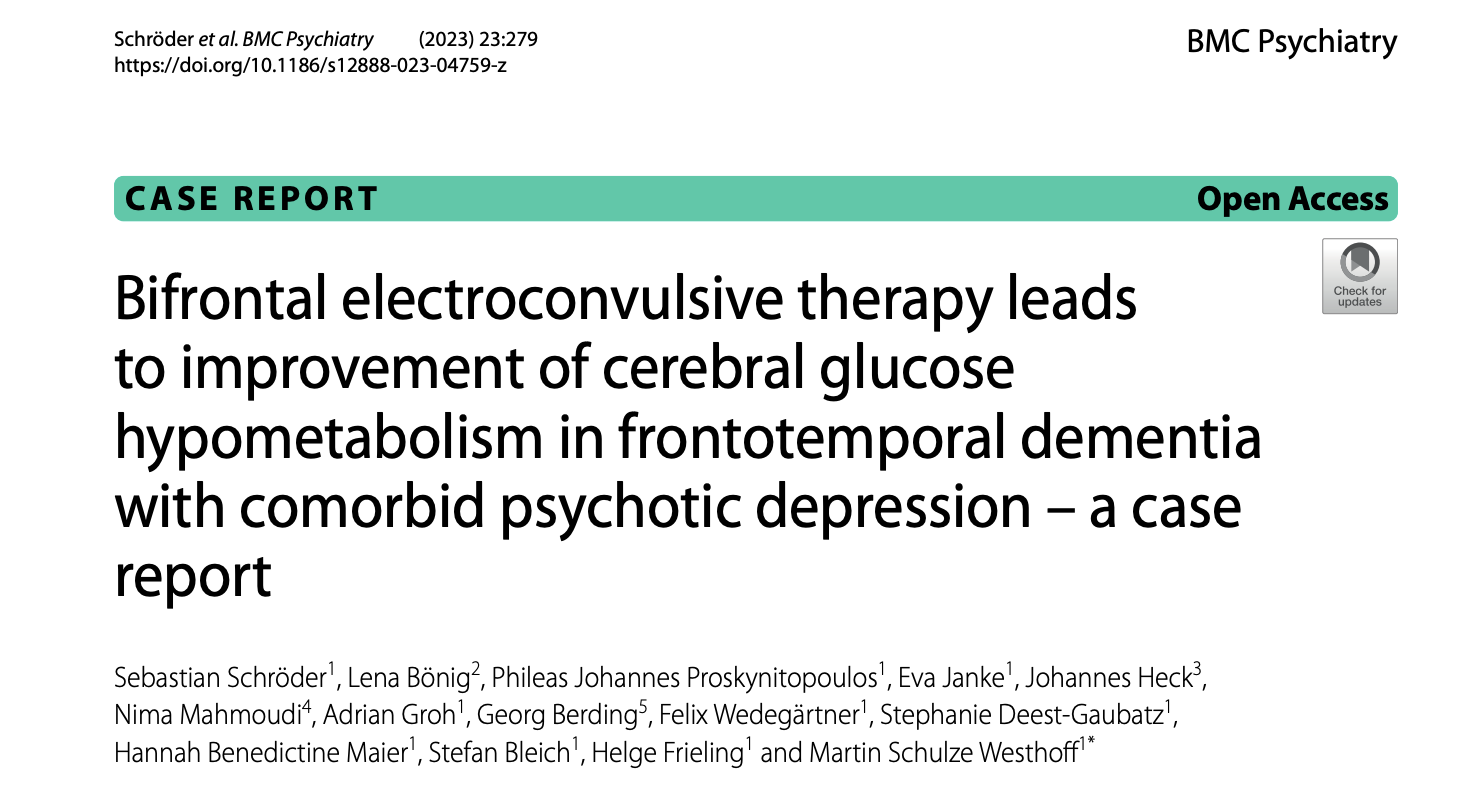Depression, FTD, or Both?: New Case Report From Germany
Out on PubMed, from clinicians in Germany, is this case report:
Bifrontal electroconvulsive therapy leads to improvement of cerebral glucose hypometabolism in frontotemporal dementia with comorbid psychotic depression - a case report.
BMC Psychiatry. 2023 Apr 20;23(1):279. doi: 10.1186/s12888-023-04759-z.PMID: 37081424
Background: Differentiating depression and dementia in elderly patients represents a major clinical challenge for psychiatrists. Pharmacological and non-pharmacological treatment options for both conditions are often used cautiously due to fear of adverse effects. If a clinically indicated therapy is not initiated due to fear of adverse effects, the quality of life of affected patients may significantly be reduced.
Case presentation: Here, we describe the case of a 65-year-old woman who presented to the department of psychiatry of a university hospital with depressed mood, pronounced anxiety, and nihilistic thoughts. While several pharmacological treatments remained without clinical response, further behavioral observation in conjunction with 18F-fluoro-2-deoxy-D-glucose positron emission tomography/computed tomography (18F-FDG PET/CT) revealed the diagnosis of frontotemporal dementia (FTD). To counter the pharmacological treatment resistance of psychotic depression, we decided to perform electroconvulsive therapy (ECT). Remarkably, ten sessions of ECT yielded an almost complete remission of depressive symptoms. In addition, the patient's delusional ideas disappeared. A follow-up 18F-FDG PET/CT after the ECT series still showed a frontally and parieto-temporally accentuated hypometabolism, albeit with a clear regression compared to the previous image. The follow-up 18F-FDG PET/CT thus corroborated the diagnosis of FTD, while on the other hand it demonstrated the success of ECT.
Conclusions: In this case, ECT was a beneficial treatment option for depressive symptoms in FTD. Also, 18F-FDG PET/CT should be discussed as a valuable tool in differentiating depression and dementia and as an indicator of treatment response.
Keywords: 18F-FDG PET/CT; Depression; ECT; Frontotemporal dementia.
The report is here.
And from the text:
Here is a case of a high-falutin' misdiagnosis. Perhaps the patient does have some component of FTD, but I don't think so; I think it is all, or almost all, depression. This is what comes from looking at the lab test (PET scan), not the patient. These clinicians also prescribe a fixed number of ECT a priori, not a good practice.
Other than the above, the case report is very well presented and clearly written.




Comments
Post a Comment